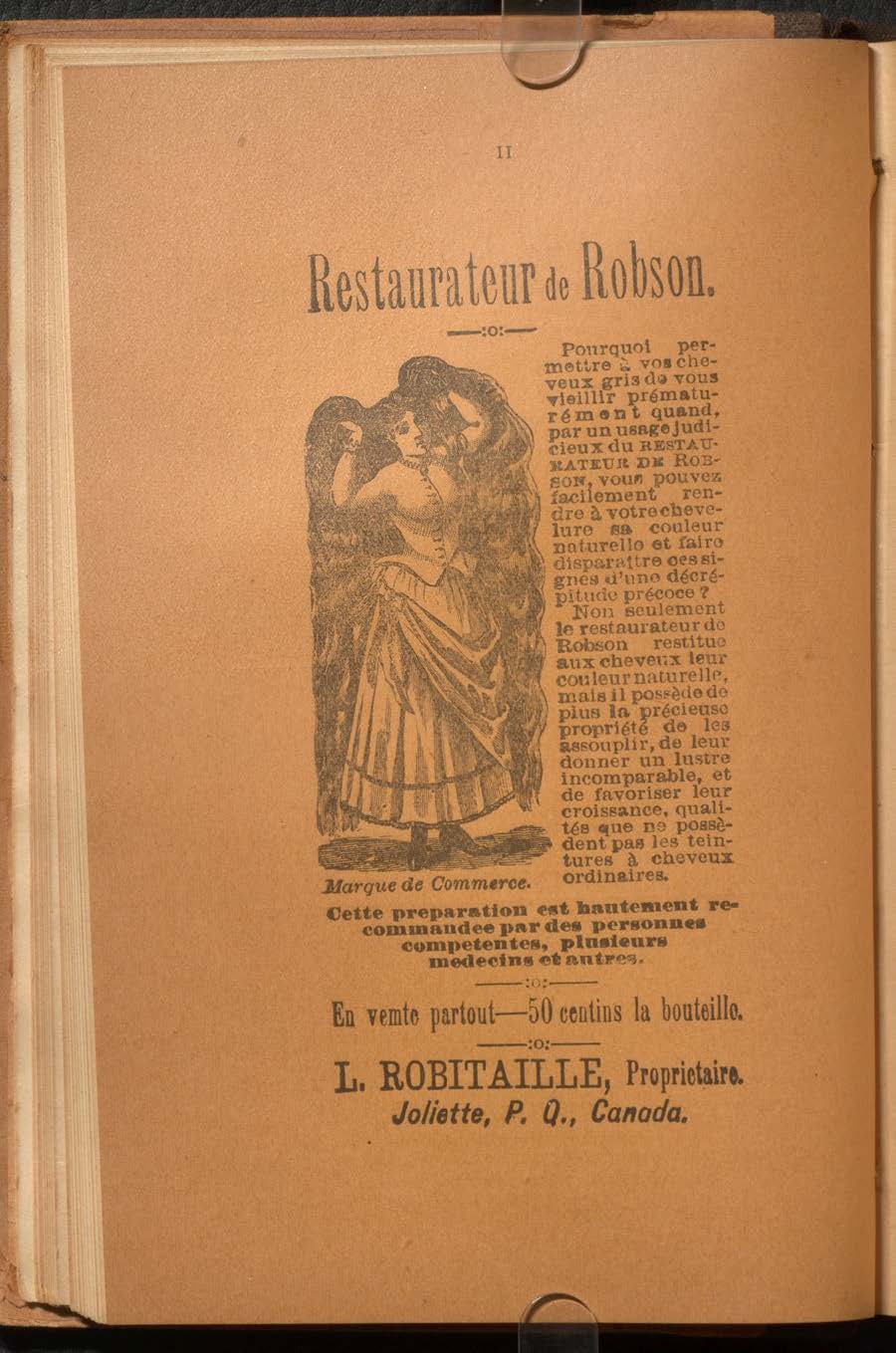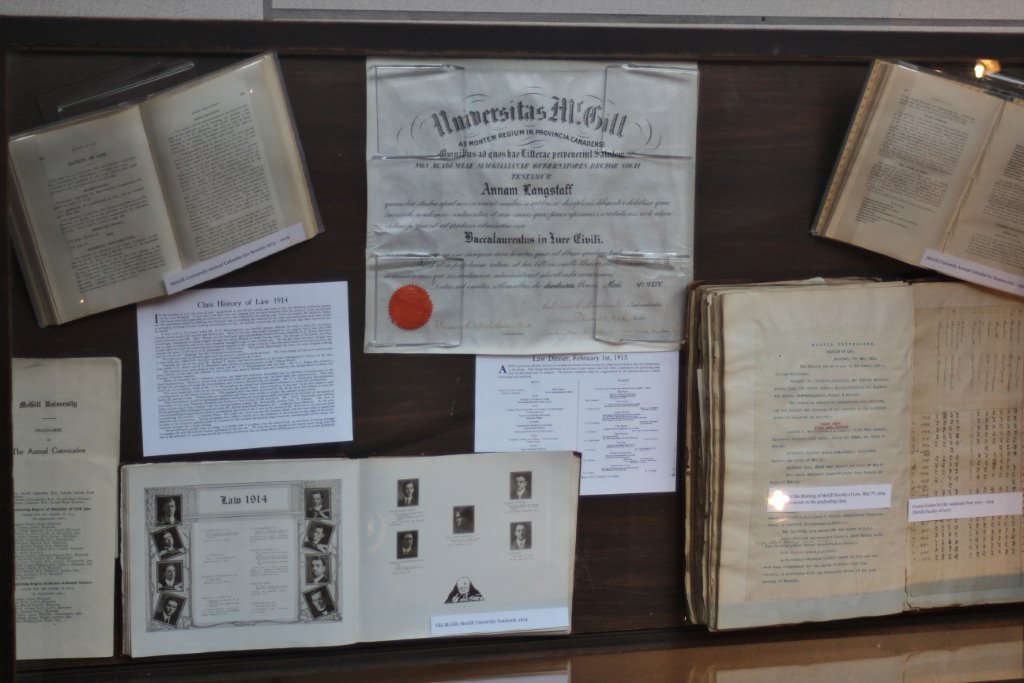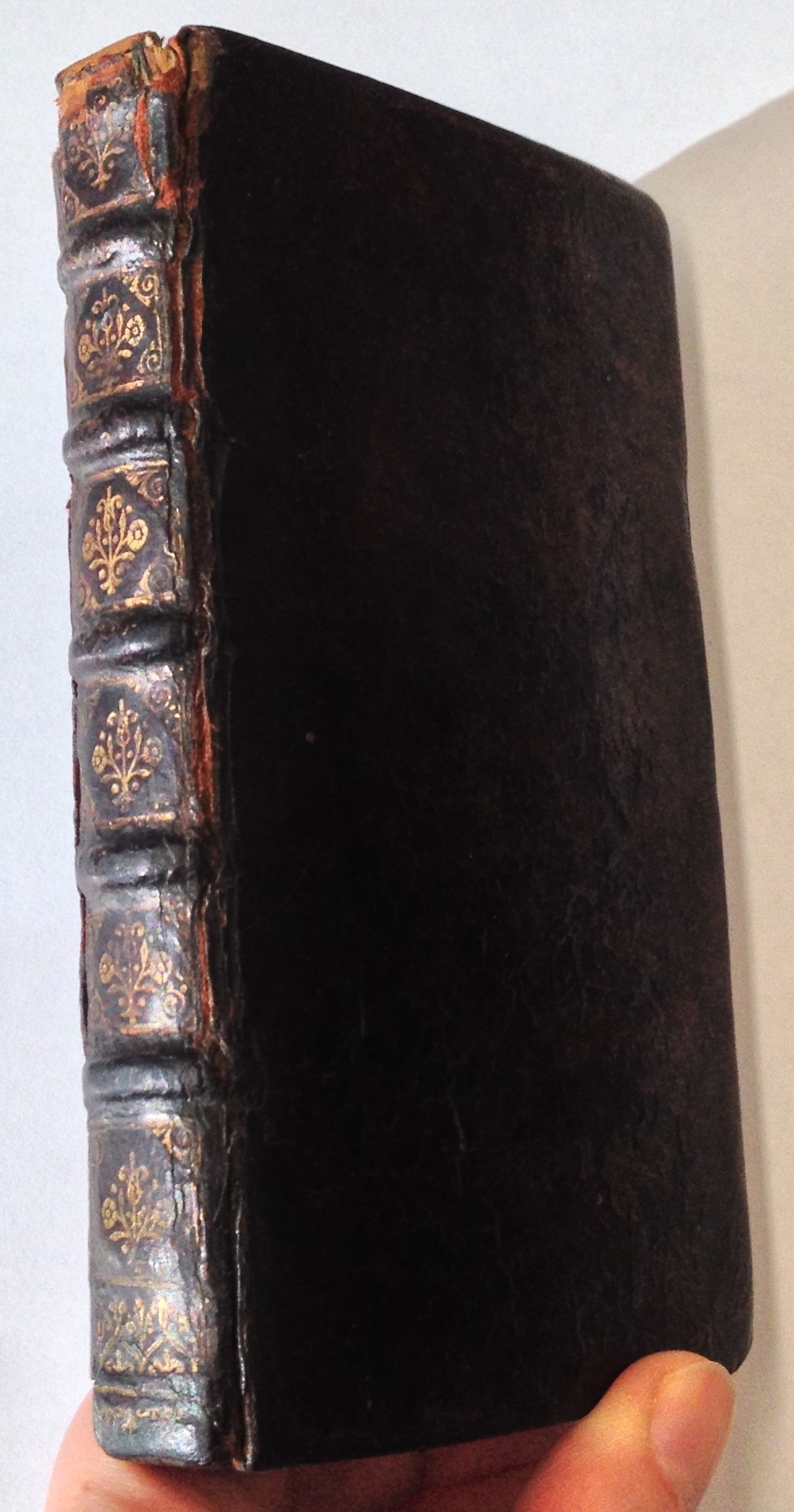 We are happy to welcome a new addition to our Wainwright Collection: Vocabvlarivm ivrisprvdentiae romanae. It is a wonderful example of an early eighteenth century hand-written legal vademecum. The dictionary is a quick and simple reference guide to the principle terms and concepts of Roman civil law. It is written in fine hand, arranged alphabetically, and has foldable margins to facilitate the marking of places. The book covers all the principle aspects of civil law from inheritances and property rights through to contracts and martial law. It includes also a section on Juris primordia, on the structure and development of the Corpus Iuris Civilis.
We are happy to welcome a new addition to our Wainwright Collection: Vocabvlarivm ivrisprvdentiae romanae. It is a wonderful example of an early eighteenth century hand-written legal vademecum. The dictionary is a quick and simple reference guide to the principle terms and concepts of Roman civil law. It is written in fine hand, arranged alphabetically, and has foldable margins to facilitate the marking of places. The book covers all the principle aspects of civil law from inheritances and property rights through to contracts and martial law. It includes also a section on Juris primordia, on the structure and development of the Corpus Iuris Civilis. 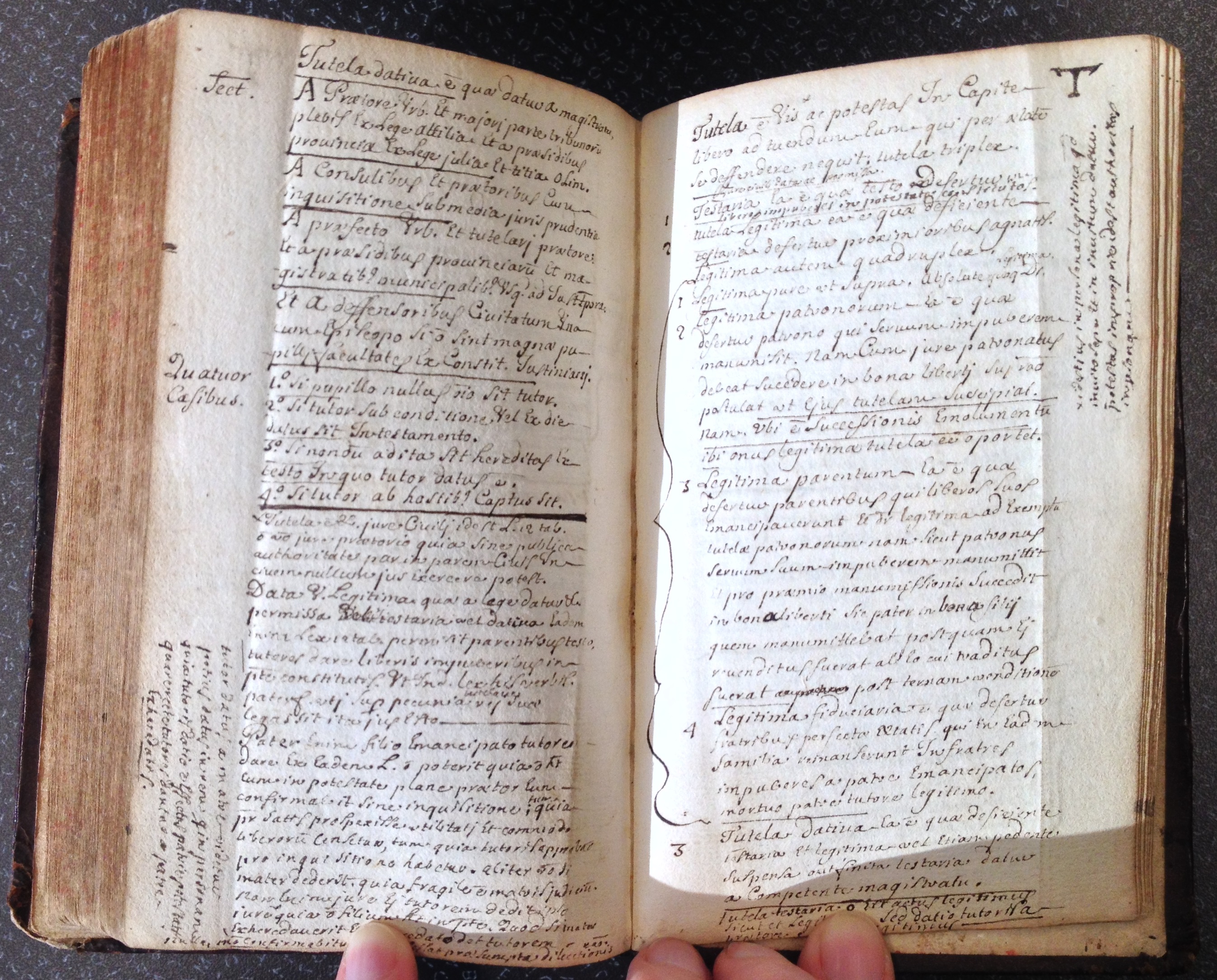 This dictionary was compiled by a 18th century lawyer, possibly a member of the Anyot family as it has a note on the front paste-down “dominus Anyot eques, 1718.” It is known that members of this Huguenot family were active as doctors, lawyers, and watchmakers in the later part of the seventeenth century in France, but after the revocation of the Edict of Nantes, many of them left France to move to England. The dictionary is a beautiful example of a “18th century pocket reference book” bound in contemporary calf, with gilt spine decorated with raised bands. It is in a well-preserved condition with just some moderate rubbing to extremities, chipping to spine ends, and somewhat worn corners.
This dictionary was compiled by a 18th century lawyer, possibly a member of the Anyot family as it has a note on the front paste-down “dominus Anyot eques, 1718.” It is known that members of this Huguenot family were active as doctors, lawyers, and watchmakers in the later part of the seventeenth century in France, but after the revocation of the Edict of Nantes, many of them left France to move to England. The dictionary is a beautiful example of a “18th century pocket reference book” bound in contemporary calf, with gilt spine decorated with raised bands. It is in a well-preserved condition with just some moderate rubbing to extremities, chipping to spine ends, and somewhat worn corners.
New Additions to our Digitised Collection
- The Law Library continues to work on enlarging our collection of digitised books from our rare and special collections. These are some latest additions that eloquently illustrate the breadth and depth of our collections:
- The compleate copy-holder, wherein is contained a learned discourse of the antiquity and nature of manors and copy-holds … Necessary, both for the Lord and Tenant: Together, with the form of keeping a Copy-hold Court and Court-Baron / Edward Coke, 1644.
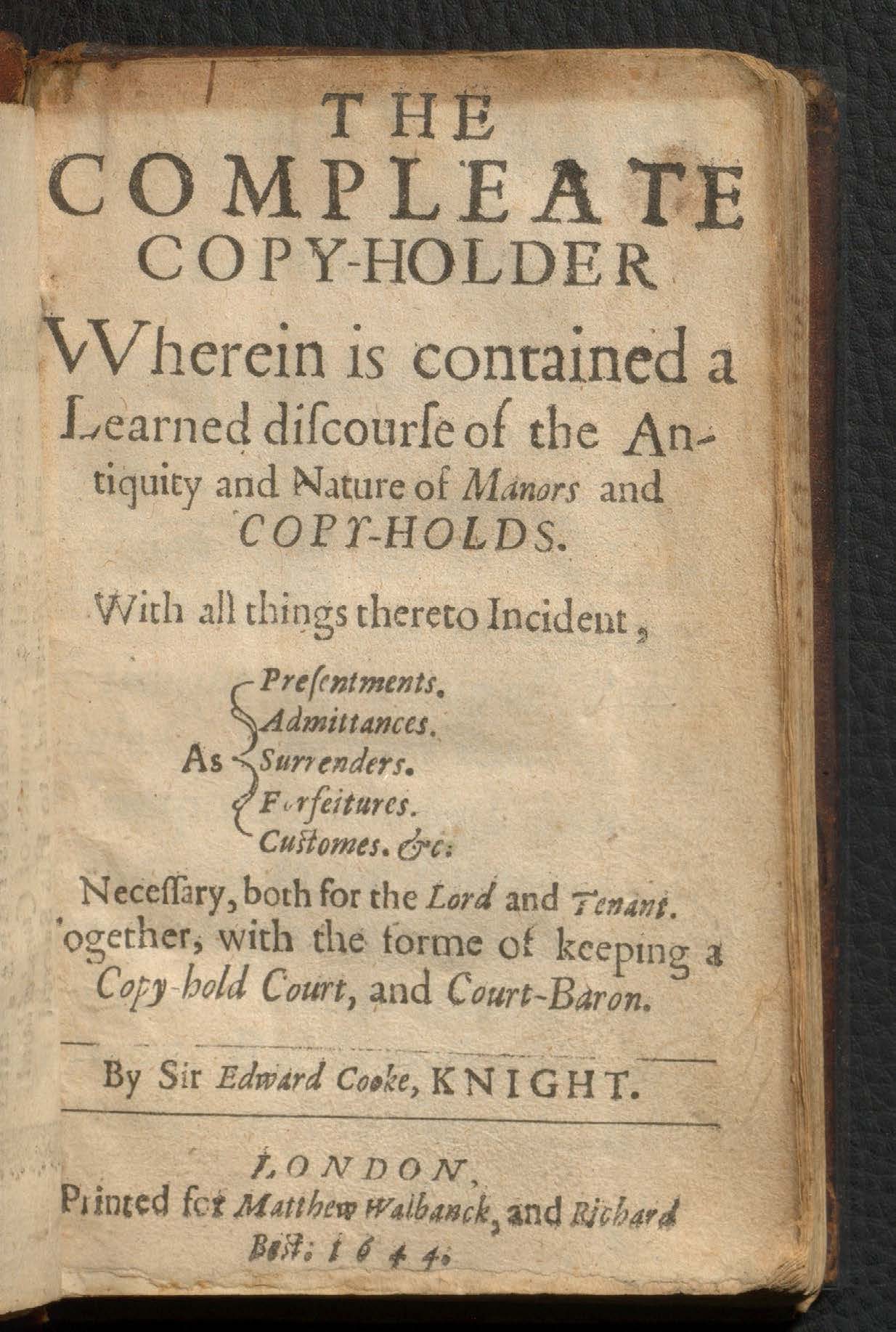
Do not be deceived by the title of this book authored by nobody else but famous, Sir Edward Coke (1552 – 1634). 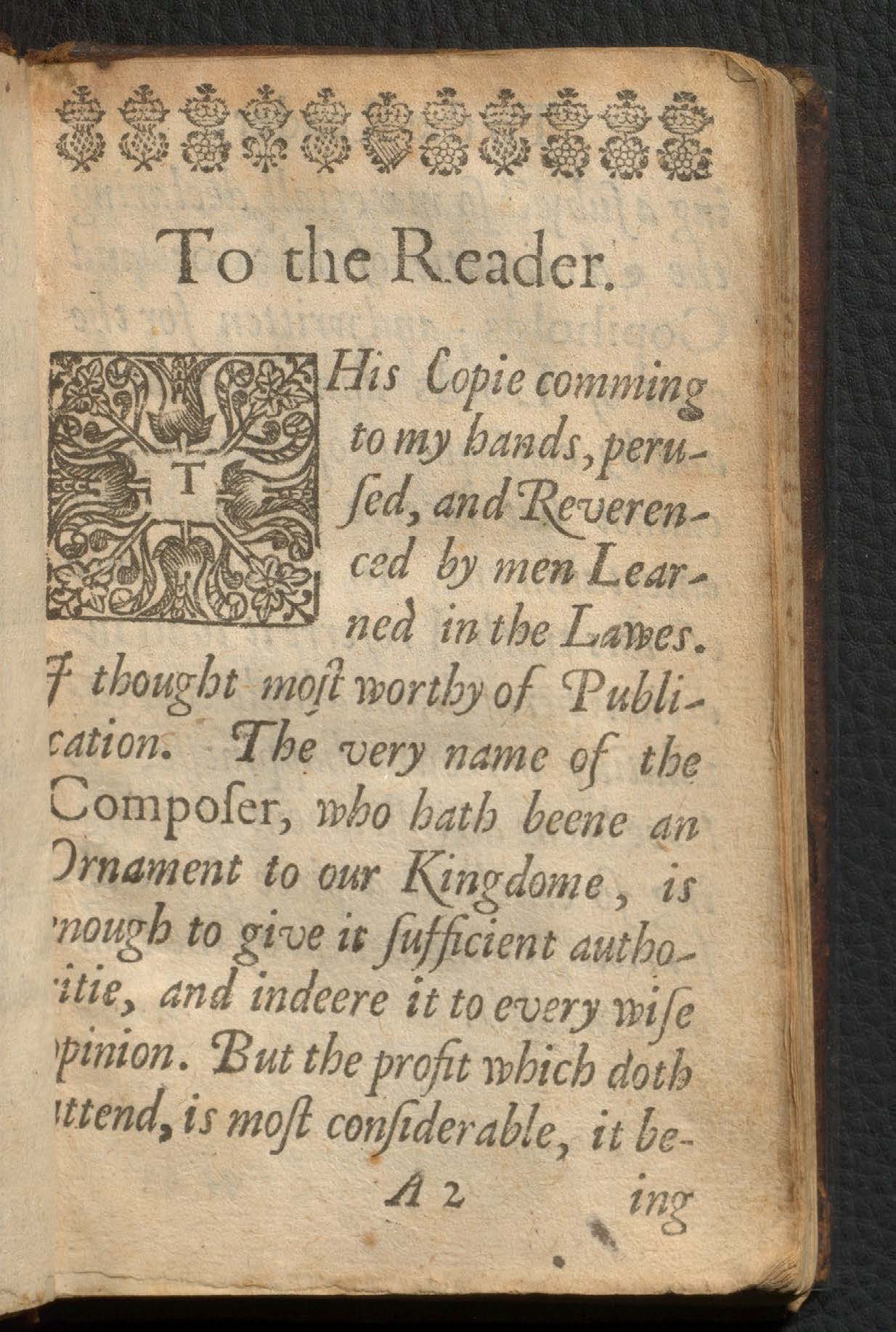 It has nothing to do with copies as we understand them now. According to Britannica, “copyhold, in English law, a form of landholding defined as a ‘holding at the will of the lord according to the custom of the manor.’ Its origin is found in the occupation by villeins, or nonfreemen, of portions of land belonging to the manor of the feudal lord. In 1926 all copyhold land became freehold land, though the lords of manors retained mineral and sporting rights.” Until 1926, manors themselves were freehold property, and were bought and sold between major landowners, while smaller landholdings within manors were held by copyhold tenure, while the land was technically owned by the Lord of the Manor.
It has nothing to do with copies as we understand them now. According to Britannica, “copyhold, in English law, a form of landholding defined as a ‘holding at the will of the lord according to the custom of the manor.’ Its origin is found in the occupation by villeins, or nonfreemen, of portions of land belonging to the manor of the feudal lord. In 1926 all copyhold land became freehold land, though the lords of manors retained mineral and sporting rights.” Until 1926, manors themselves were freehold property, and were bought and sold between major landowners, while smaller landholdings within manors were held by copyhold tenure, while the land was technically owned by the Lord of the Manor. 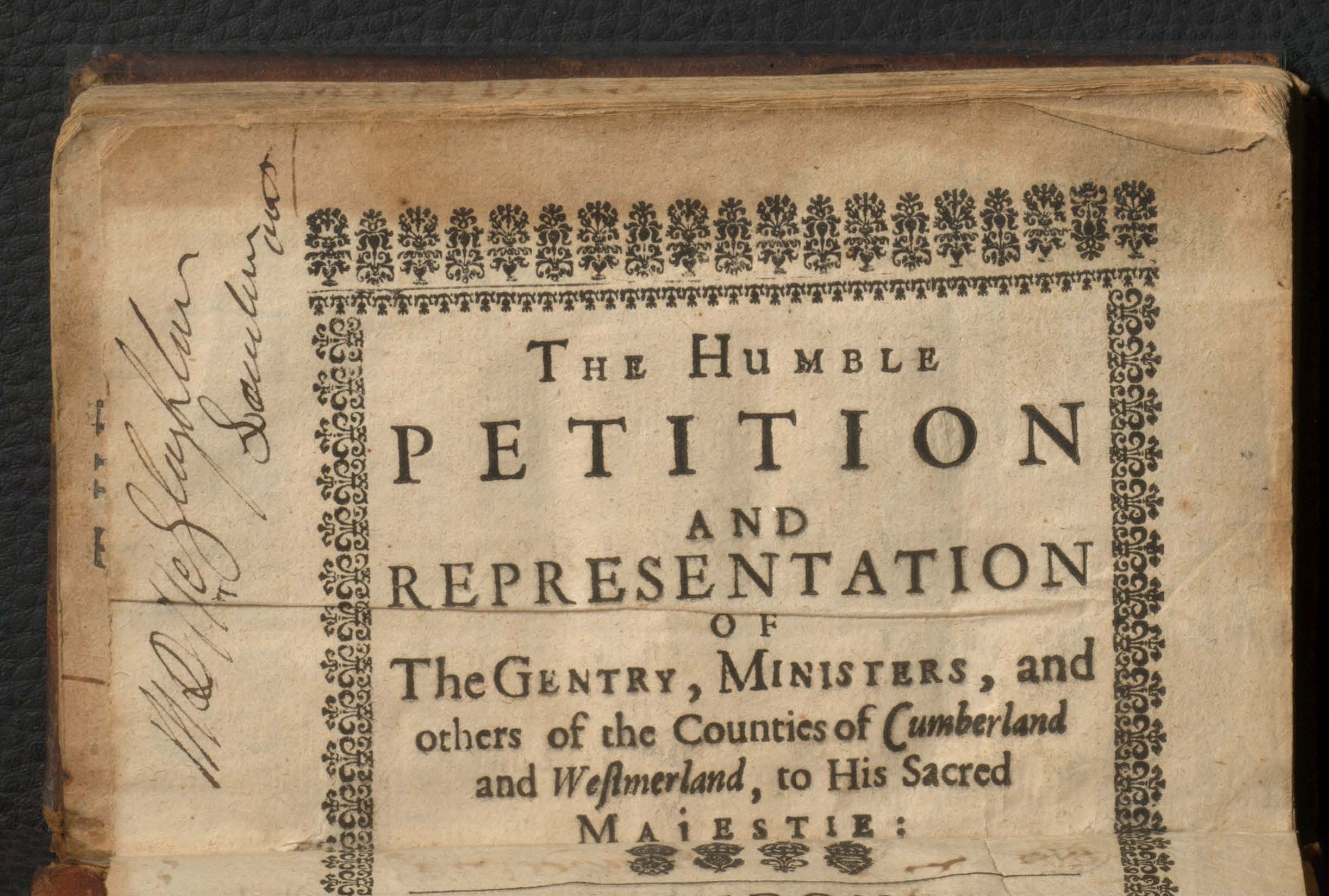 The term ‘copyhold’ originates from the custom when the official record of the copyhold on landholding was written up in the manorial court rolls and an official copy of the court roll entry was made for the tenant as their proof of title. This particular copy is especially interesting because printers’ waste (unused pages printed for other book) have been used as end papers.
The term ‘copyhold’ originates from the custom when the official record of the copyhold on landholding was written up in the manorial court rolls and an official copy of the court roll entry was made for the tenant as their proof of title. This particular copy is especially interesting because printers’ waste (unused pages printed for other book) have been used as end papers.
- Collection of legal documents relating to a lawsuit by Francis Rybot against Pierre DuCalvet, in the Court of Common Pleas, Province of Quebec, District of Montreal, 1783-1786.
 This uninviting title is in fact an illustration to a less-known episode of the life of one of the famous figures of the Québec history. The digitised manuscript documents are related to the court case against Pierre DuCalvet, who was a Montreal trader, justice of the peace, epistle writer, author of the famous Appel à la justice de l’État, and passionate advocate of the reform of justice and constitutional system in Québec. The full biography of Pierre DuCalvet can be found in the Dictionary of Canadian Biography.
This uninviting title is in fact an illustration to a less-known episode of the life of one of the famous figures of the Québec history. The digitised manuscript documents are related to the court case against Pierre DuCalvet, who was a Montreal trader, justice of the peace, epistle writer, author of the famous Appel à la justice de l’État, and passionate advocate of the reform of justice and constitutional system in Québec. The full biography of Pierre DuCalvet can be found in the Dictionary of Canadian Biography.
- Les revélations du crime: ou, Cambray et ses complices; Chroniques canadiennes de 1834 / Réal F. Angers, 1880.
 Ce livre est le récit romancé des méfaits, vols, sacrilèges et meurtres d’une bande de brigands qui a terrorisé la ville de Québec et ses environs de 1834 à 1837. Vous pouvez trouver plus d’information sur la bande des Chambers ici. According to the Dictionary of Canadian Biography, this work by François-Réal Angers was considered “one of the most readable and widely circulated books of the first half of the 19th century in Canada.” It was published in several monograph editions in 1834, 1867, 1880, and 1969, serialised in at least three newspapers, and translated into English in 1867 as The Canadian brigands; an intensely exciting story of crime in Quebec, thirty years ago!
Ce livre est le récit romancé des méfaits, vols, sacrilèges et meurtres d’une bande de brigands qui a terrorisé la ville de Québec et ses environs de 1834 à 1837. Vous pouvez trouver plus d’information sur la bande des Chambers ici. According to the Dictionary of Canadian Biography, this work by François-Réal Angers was considered “one of the most readable and widely circulated books of the first half of the 19th century in Canada.” It was published in several monograph editions in 1834, 1867, 1880, and 1969, serialised in at least three newspapers, and translated into English in 1867 as The Canadian brigands; an intensely exciting story of crime in Quebec, thirty years ago!
- A declaration of His Majesties royall pleasure, in what sort he thinketh fit to enlarge or reserve himself in matter of bountie / James I, King of England, 1897.
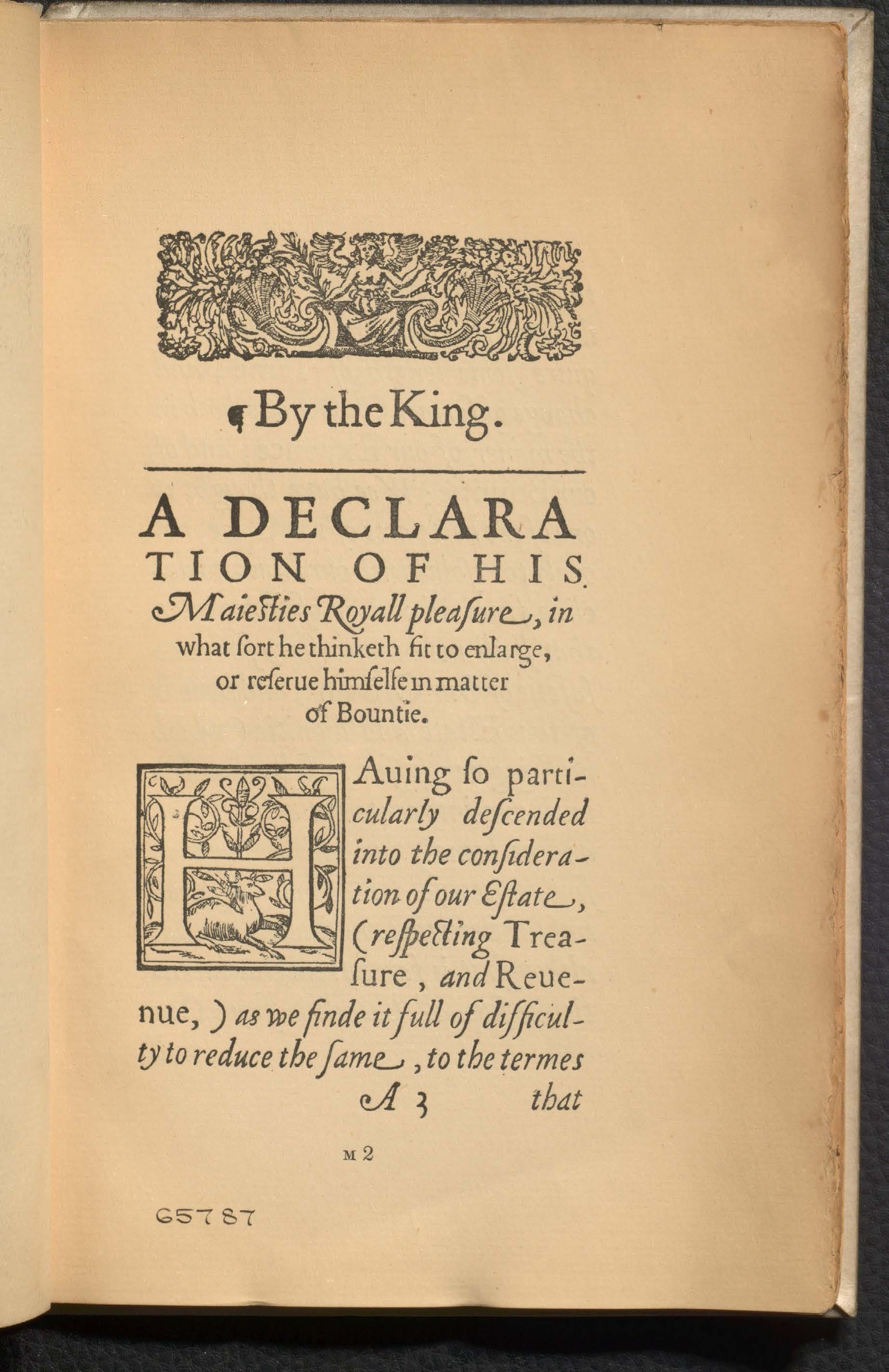 This book is a facsimile reprint produced by the British Museum in 1897. The original was published in 1610. This declaration was issued by James I (1603-1625) as a clarifying statement concerning granting of monopolies following the grievances expressed in and by Parliament. The culmination of this discussion was adoption of the Statute of Monopolies 1624, 21 Jac 1, c 3, one of the key texts in the history of patent law. You can read more on the 1624 Statute of Monopolies in this article ‘Generally Inconvenient’: The 1624 Statute of Monopolies as Political Compromise. 33 Melb U L Rev 415 (2009).
This book is a facsimile reprint produced by the British Museum in 1897. The original was published in 1610. This declaration was issued by James I (1603-1625) as a clarifying statement concerning granting of monopolies following the grievances expressed in and by Parliament. The culmination of this discussion was adoption of the Statute of Monopolies 1624, 21 Jac 1, c 3, one of the key texts in the history of patent law. You can read more on the 1624 Statute of Monopolies in this article ‘Generally Inconvenient’: The 1624 Statute of Monopolies as Political Compromise. 33 Melb U L Rev 415 (2009).
And some more books…
- A letter to Henry Warburton, Esq. M.P. upon the emancipation of the Jews / Basil Montagu, 1833.
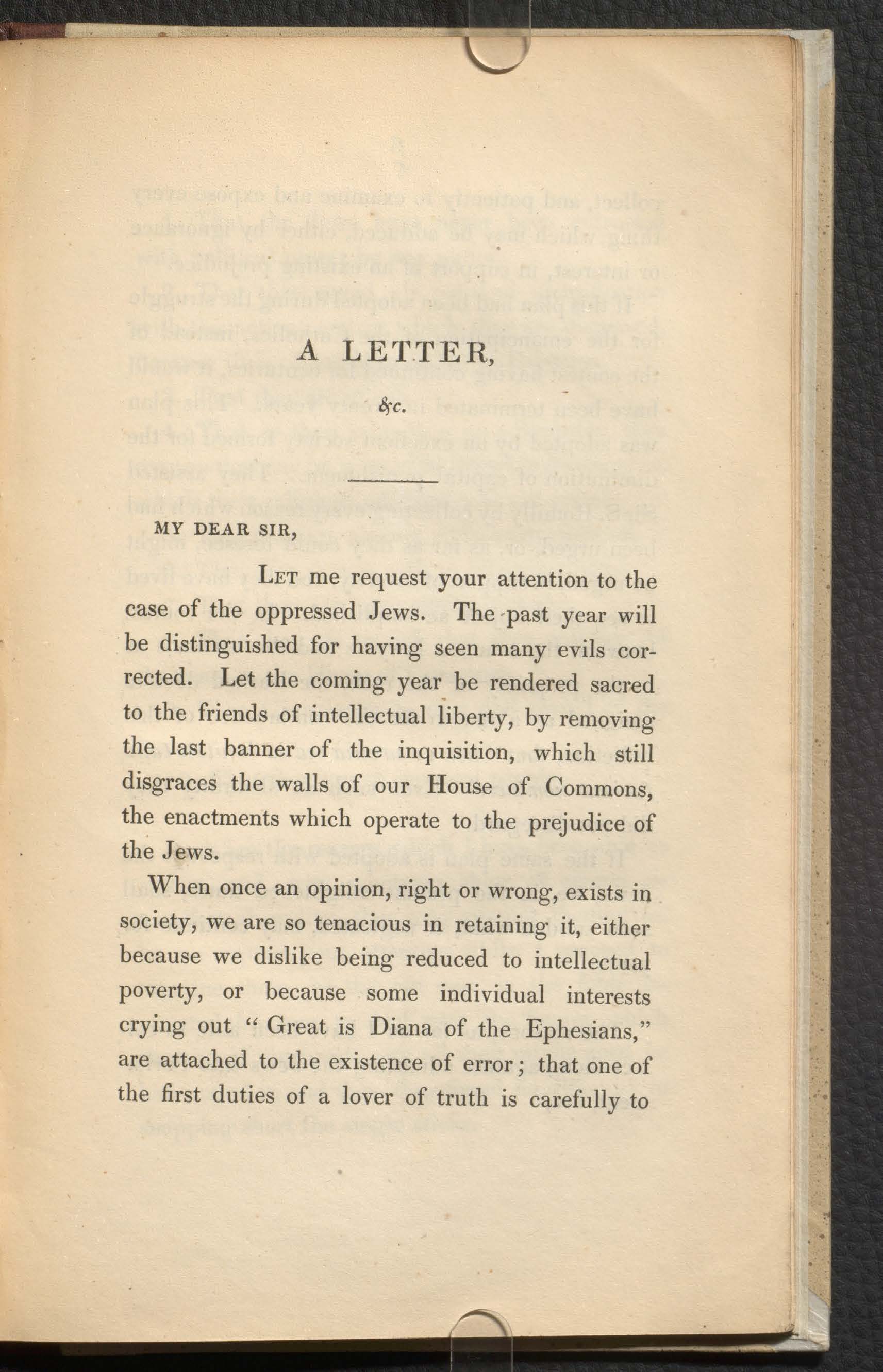
- The work of a faculty of law in a university (An annual university lecture delivered by Frederick Parker Walton, the Dean of the Faculty of Law, and Professor of Roman Law at McGill University), 1898.
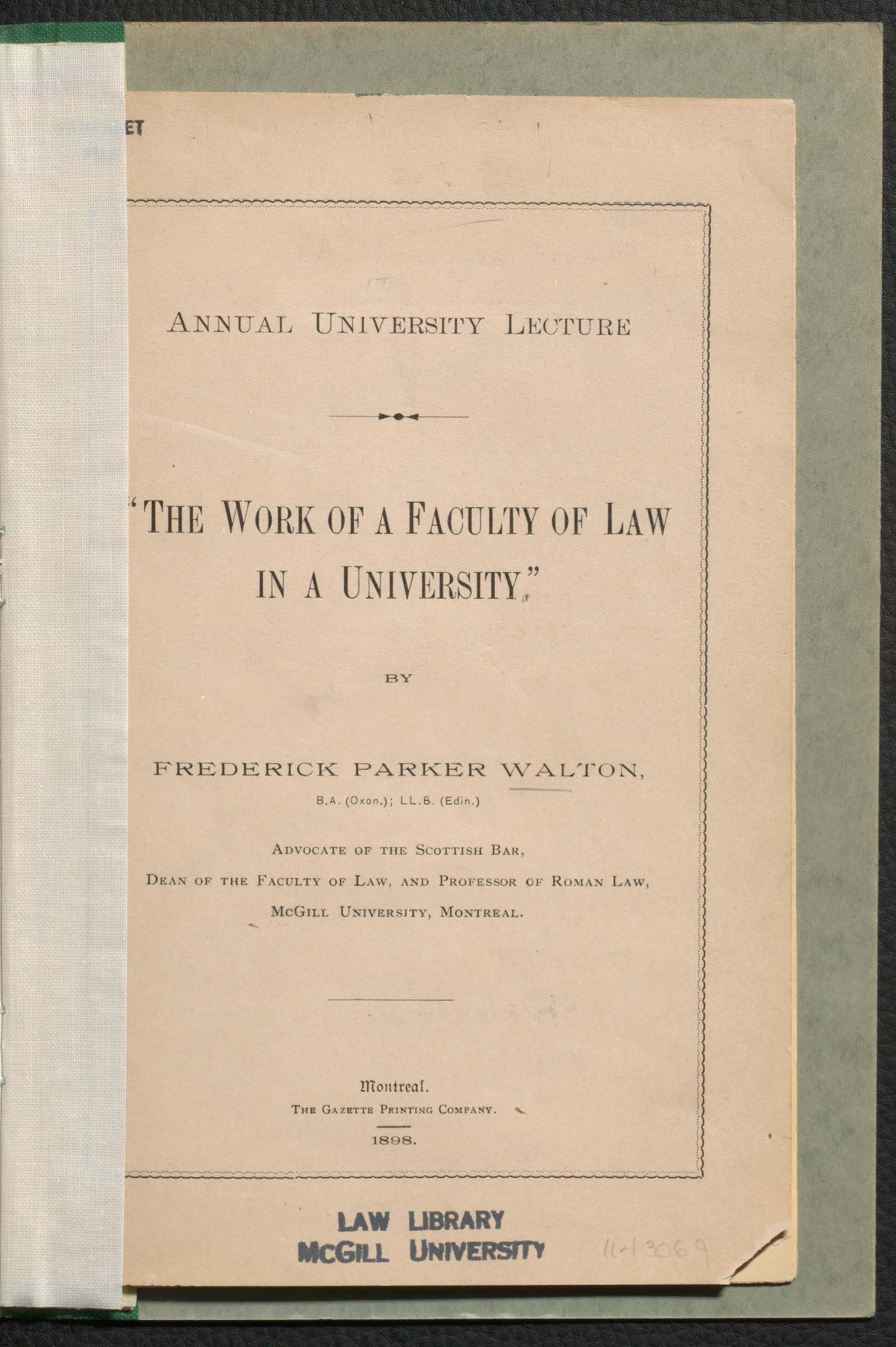
- A guide for constables, churchwardens, overseers of the poor, surveyors of the high-ways, treasurers of the county-stock, masters of the house of correction, bayliffs of mannors, toll-takers in fairs, &c. A treatise briefly shewing the extent and latitude of the several offices, with the power of the officers therein, both by common law and statute, according to the several additions and alterations of the law / George Meriton, 1679.

- Index professionnel des avocats, notaires, protonotaires régistrateurs, shérifs, huissiers, médecins, pharmaciens, dentistes, architectes, arpenteurs, ingénieurs civils, et médecins vétérinaires de la province de Québec, 1894.
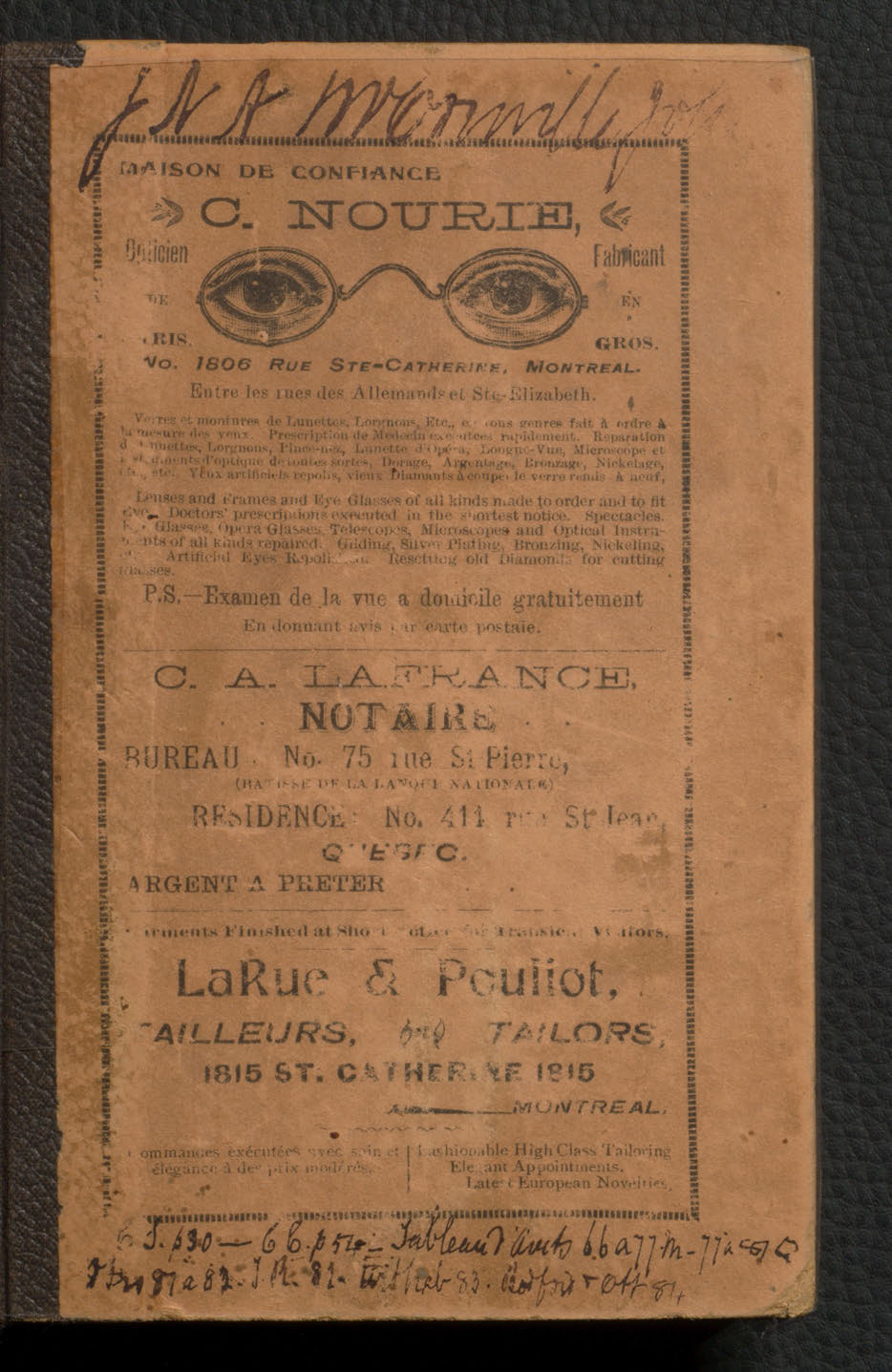
New E-Books Collection: Oxford Scholarly Authorities on International Law
Law Library has just acquired access to the new International Law collection, Oxford Scholarly Authorities on International Law. This collection of ebooks:
- Provides full text access to leading works such as Oppenheim’s International Law, Simma’s Commentary on the UN Charter, and Crawford’s Creation of States in International Law
- Includes all titles in the Oxford Commentaries on International Law series, and the Oxford International Law Library series
- Content can be browsed by author, title, subject, and by the cases and instruments cited by books included in the site
- Gives access the Oxford Law Citator for links to cases, articles, and additional materials related to each article
- Available on the Oxford Public International Law platform, enabling users to cross-search OSAIL with Oxfords list of public international law resources Oxford Reports on International Law, the Max Planck Encyclopedia of Public International Law and Oxford Historical Treaties
Quid Novi Archives are Online!
This summer, the McGill library has been hard at work digitising historic McGill student newspapers. Now the project is completed, and the digital versions are accessible online at the Internet Archive. This extensive digital collection currently includes over 10,000 issues from various McGill student publications including The Fortnightly, The McGill Outlook, Le Délit, The McGill Daily, Quid Novi, The Dram and the Failt-Ye Times. As you can see, our beloved Quid was also part of this massive effort. You can access the full archives of Quid Novi 656 issues here:
Good reading to everybody!
Nouvelle version de bibliothèque numérique Gallica
A compter du 1er octobre, une nouvelle version de Gallica est mise en ligne. Elle comprend une refonte technique complète ainsi que des évolutions ergonomiques et graphiques. Parmi les nouveautés à découvrir : le visualiseur de documents et ses différents modes d’affichage (simple et double page, défilement vertical, zoom plein écran), les pages de présentation des fonds numérisés accessibles depuis le bouton “Collections”, des évolutions concernant la navigation et la recherche au sein des titres de presse et de revues, l’arrivée de nouveaux types de documents (objets, vidéos), etc. Pour en savoir plus sur cette nouvelle version de Gallica, consultez le billet du Blog Gallica.
New Exhibition: “Justice, justice shall you pursue”: Jewish Law from Biblical Times to the Present”
 Jewish Law has a history of more than three thousand years. This extended time, can be divided in two main periods: The first broad period begins with the written Torah and ends with the completion of the Talmud. The second broad period is the post-Talmudic period, from the completion of the Talmud until our own day (Elon, Menachem. Jewish law: history, sources, principles).
Jewish Law has a history of more than three thousand years. This extended time, can be divided in two main periods: The first broad period begins with the written Torah and ends with the completion of the Talmud. The second broad period is the post-Talmudic period, from the completion of the Talmud until our own day (Elon, Menachem. Jewish law: history, sources, principles).
The Hebrew word “halakhah” is usually translated as “Jewish Law”, although a more literal translation might be “the path that one walks”. The word is derived from the Hebrew root Heh-Lamed-Kaf, meaning to go, to walk, or to travel (Encyclopaedia Judaica).
The principles and rules of Jewish Law are based on the Bible. While some rules are mentioned quite explicitly, others are only implied. All are elucidated in the teachings of the Tanna’im and Amora’im – the Rabbis of the Mishnah and Talmud – and presented systematically in the codes. Thus, over the generations, a comprehensive legal system has developed.
Jewish tradition compares Jewish law to a living tree. As the Torah, the sacred scroll of the Five Books of Moses, is returned to the ark after being read in synagogue services, the liturgy quotes from the biblical book of Proverbs (4:2, 3: 18, 17): I give you good instruction; never forsake My Torah. It is a tree of life for those who hold fast to it, and those who uphold it are happy. Its ways are pleasant, and all its paths are peace. (A Living Tree. Roots and Growth of Jewish Law)
 The books for this exhibition come from the holdings of the Rare Books and Special Collections, the Nahum Gelber Law Library Special Collections, and the Humanities and Social Science Library.
The books for this exhibition come from the holdings of the Rare Books and Special Collections, the Nahum Gelber Law Library Special Collections, and the Humanities and Social Science Library.
Among the books presented we find a volume of the Ḥamishah ḥumshe Torah: ketav yad Temani. This is a facsimile edition of 390 copies of a manuscript of the Pentateuch, in accordance with the Yemenite tradition, with the Targum, Tafsir of Saʼadya Gaon and the Collecteana of R. Yaḥya Siani.
A miniature Shulchan Aruch, printed in Venice, in 1574. The Shulchan Aruch, or “Set Table” is a codification of Jewish law composed by Rabbi Joseph Karo in the 16th century. Together with its commentaries, it is considered the most authoritative compilation of halakha since the Talmud.
The book Sefer ha-hinukh: yavo’u vo ha-613 mitsvot, yesod Torat Moshe u-nevuato, was also printed in Venice in the Jewish year 361 [1600 or 1601]. This is an anonymous work on the 613 precepts in the order of their appearance in Scripture, giving their reasons and their laws in detail. The book is mainly based on the Sefer ha-Mitzvot and the Mishneh Torah of Maimonides.
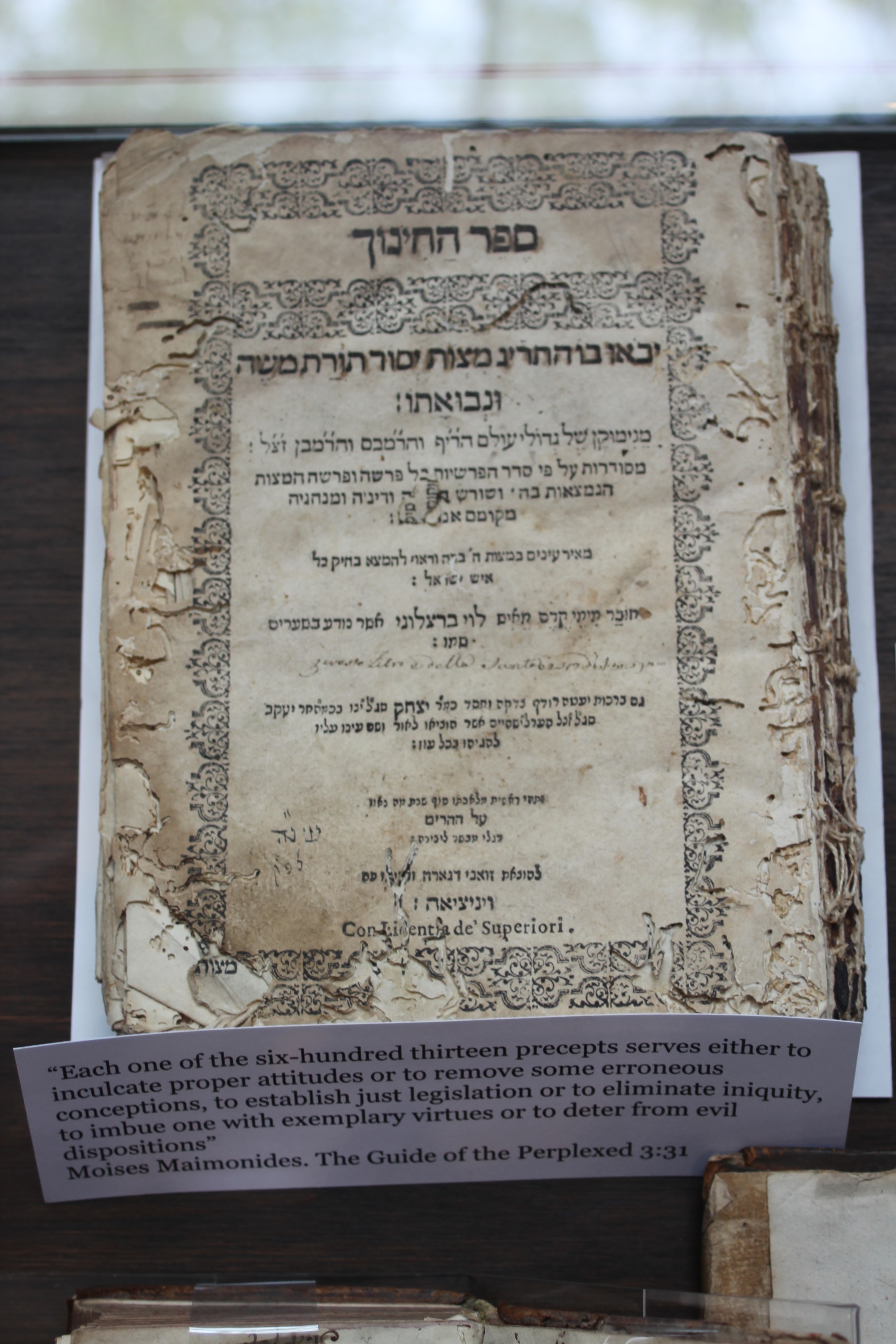 One of the centerpieces is The Codex Maimuni: Moses Maimonides’ Code of law: the illuminated pages of the Kaufmann Mishneh Torah. This book, published in 1984 reprints sixty-eight of the most beautiful pages from the illuminated codex of the Kaufmann Mishneh Torah, one of the most outstanding surviving exemplars of mediaeval Hebrew book production.
One of the centerpieces is The Codex Maimuni: Moses Maimonides’ Code of law: the illuminated pages of the Kaufmann Mishneh Torah. This book, published in 1984 reprints sixty-eight of the most beautiful pages from the illuminated codex of the Kaufmann Mishneh Torah, one of the most outstanding surviving exemplars of mediaeval Hebrew book production.
A surviving example of Das talmudische Recht : auf den verschiedenen Stufen seiner Entwicklung mit dem römischen verglichen und systematisch dargestellt. Sachenrecht by S. Rubin (Wien: Druckerei-und Verlags-A.-G. Ig. Steinmann. 1938). This copy was printed in Viena, in 1938. According to a review written by W. R. Taylor, the author has planned a study of Talmudic law to be embraced in three volumes. The purpose of the project, according to Taylor, was to bring the Talmudic legislation into a scientific arrangement in harmony with modern methods and to institute a comparison of the Talmudic material with the relative parts of Roman law. At the end of each chapter there are extensive notes inclusive of references, citations, and expositions of maxims from the Talmud and the later codes of Maimonides, Asher, and Karo, and from Roman law.
Ioannis Seldeni, De synedriis & praefecturis juridicis veterum Ebraeorum. Londini: Typis Jacobi Flesher: Prostant apud Cornelium Bee …, 1650-1655. John Selden, 1584-1654, was an English jurist and a scholar of England’s ancient laws and constitution and a scholar of Jewish law. In 1650 Selden began to print the trilogy he planned on the Sanhedrin, the assembly of sages that constituted the highest political magistracy of the country.
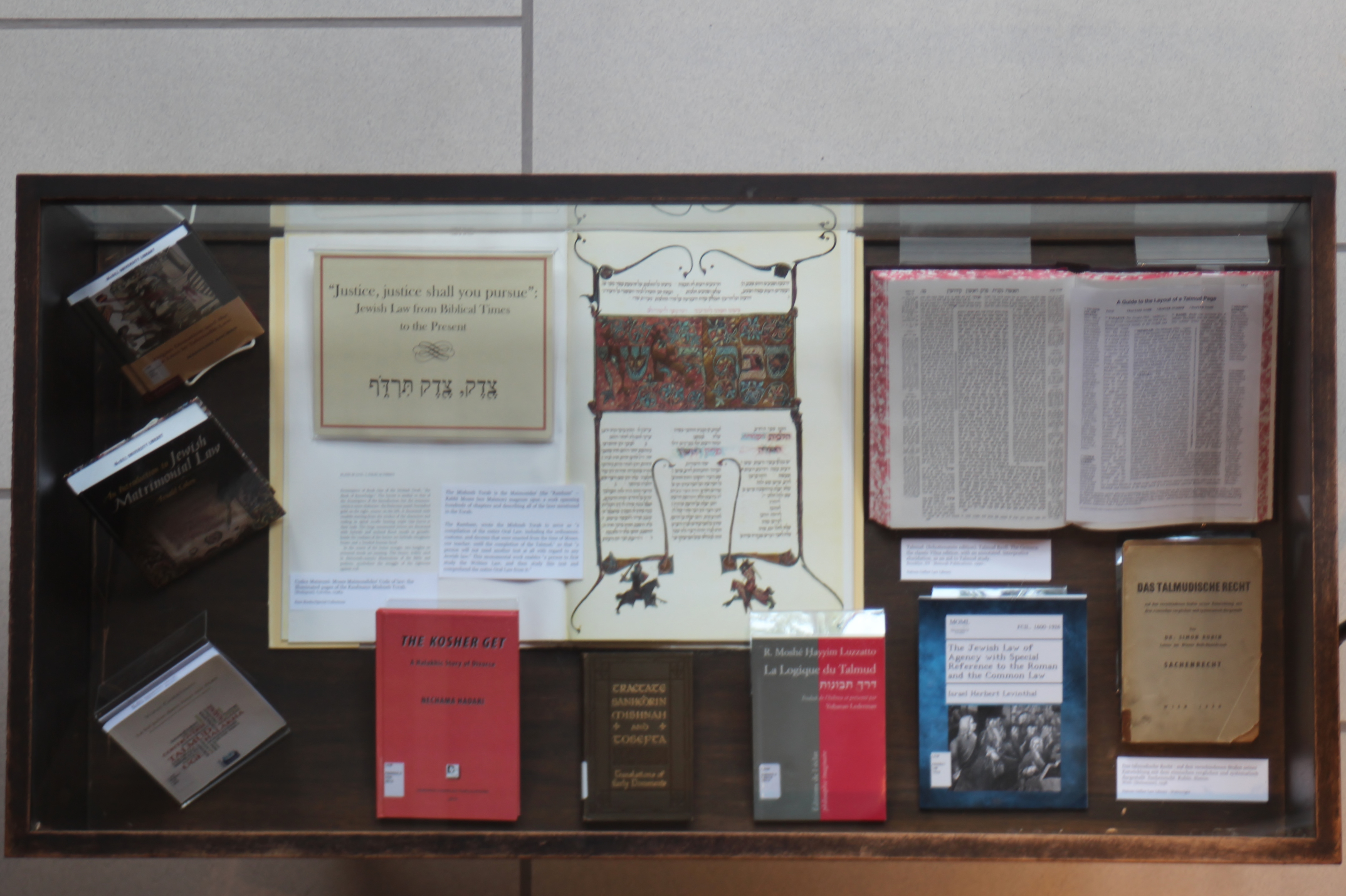
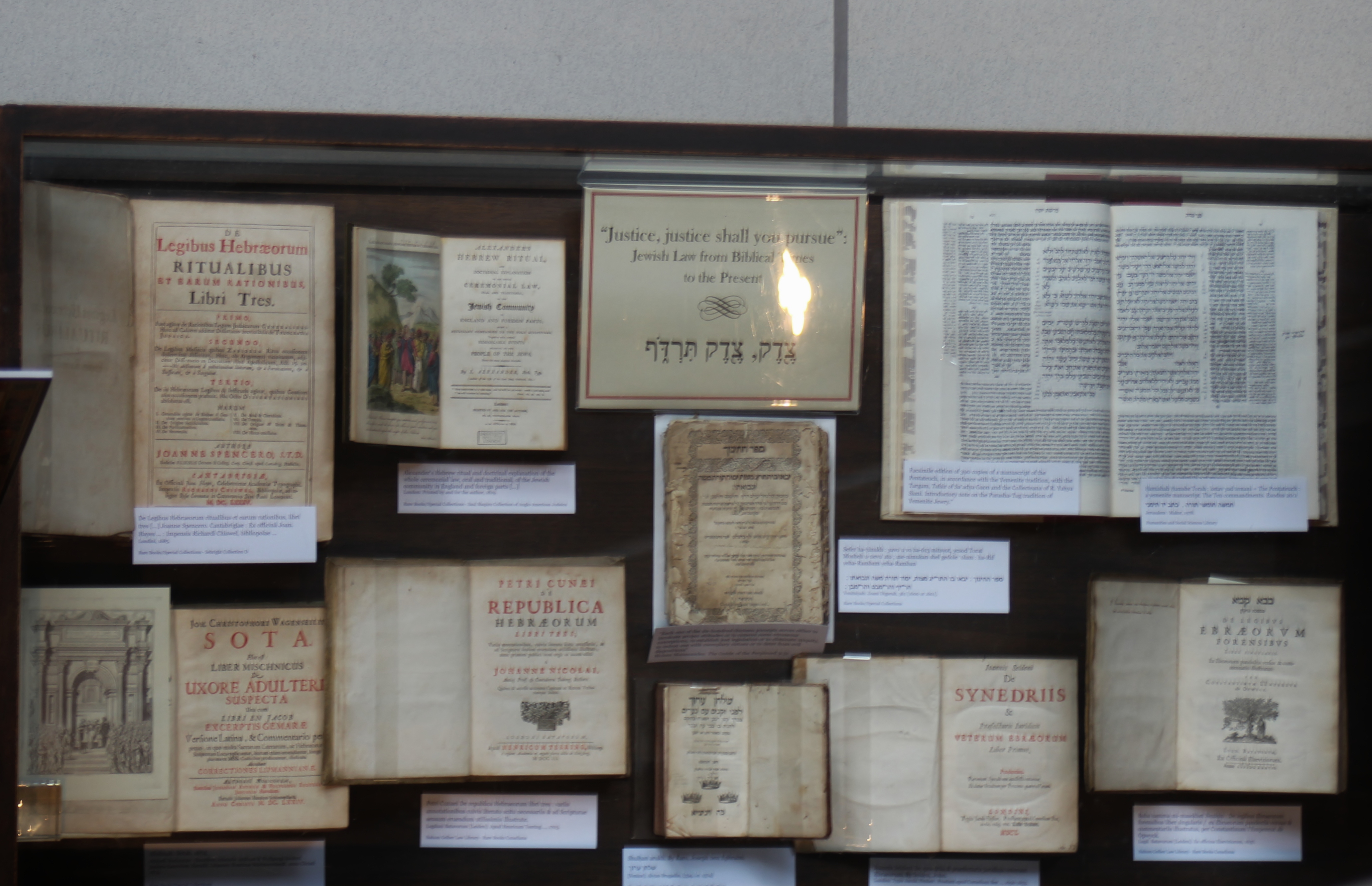 This exhibition was planned and organized by Sonia Smith and Svetlana Kochkina, librarians at the Nahum Gelber law Library.
This exhibition was planned and organized by Sonia Smith and Svetlana Kochkina, librarians at the Nahum Gelber law Library.
Une nouvelle acquisition : Le code Henry IV … avec des violettes.
Grace à la générosité du Wainwright Fund, qui attribue chaque année un budget destiné au développement et élargissement de la collection de notre bibliothèque dans les domaines du droit civil non-québécois, nous avons ajouté un nouveau livre rare à la Collections Wainwright :
- Le code du très-chrestien et très-victorieux roy de France et de Nauarre, Henry IIII : Du droit ciuil iadis descrit, & à nous delaissé confusément par l’Empereur Iustinian & maintenant reduit & composé en bon & certain ordre, avec le droit ciuil de la France, contenant trente & vn liures / par M. Thomas Cormier …
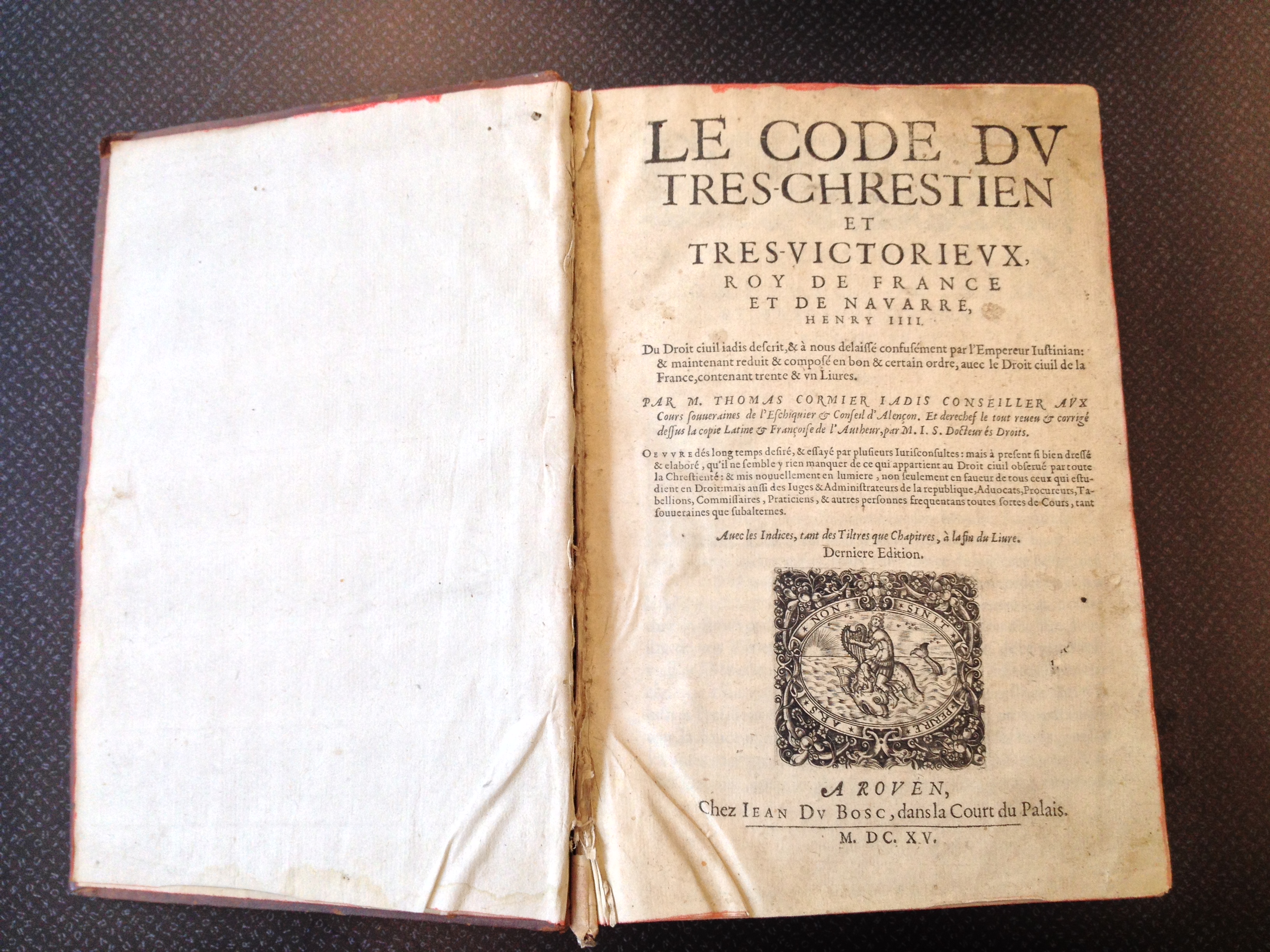 L’auteur, Thomas Cormier (c.1523-1600), a été un historien et jurisconsulte français et un président en l’échiquier d’Alençon. Son Code Henry IV n’est pas un recueil d’ordonnances du souverain comme le Code Henry III, qu’on détient aussi dans notre collection, mais un traité de droit civil où l’auteur compare le droit romain et le droit civil français. L’ouvrage, destinée aux étudiants et praticiens de droit, est une synthèse du droit romain de Justinien qui selon l’auteur “à nous délaissé confusément par l’Empereur Justinien et maintenant réduit et composé en bon et certain ordre” auquel Cormier a ajouté du droit français et plus précisément du droit français tel qu’il a été suivi en Normandie. Le traité a été rédigé d’abord en langue latine (1602) et traduit en français en 1603.
L’auteur, Thomas Cormier (c.1523-1600), a été un historien et jurisconsulte français et un président en l’échiquier d’Alençon. Son Code Henry IV n’est pas un recueil d’ordonnances du souverain comme le Code Henry III, qu’on détient aussi dans notre collection, mais un traité de droit civil où l’auteur compare le droit romain et le droit civil français. L’ouvrage, destinée aux étudiants et praticiens de droit, est une synthèse du droit romain de Justinien qui selon l’auteur “à nous délaissé confusément par l’Empereur Justinien et maintenant réduit et composé en bon et certain ordre” auquel Cormier a ajouté du droit français et plus précisément du droit français tel qu’il a été suivi en Normandie. Le traité a été rédigé d’abord en langue latine (1602) et traduit en français en 1603.

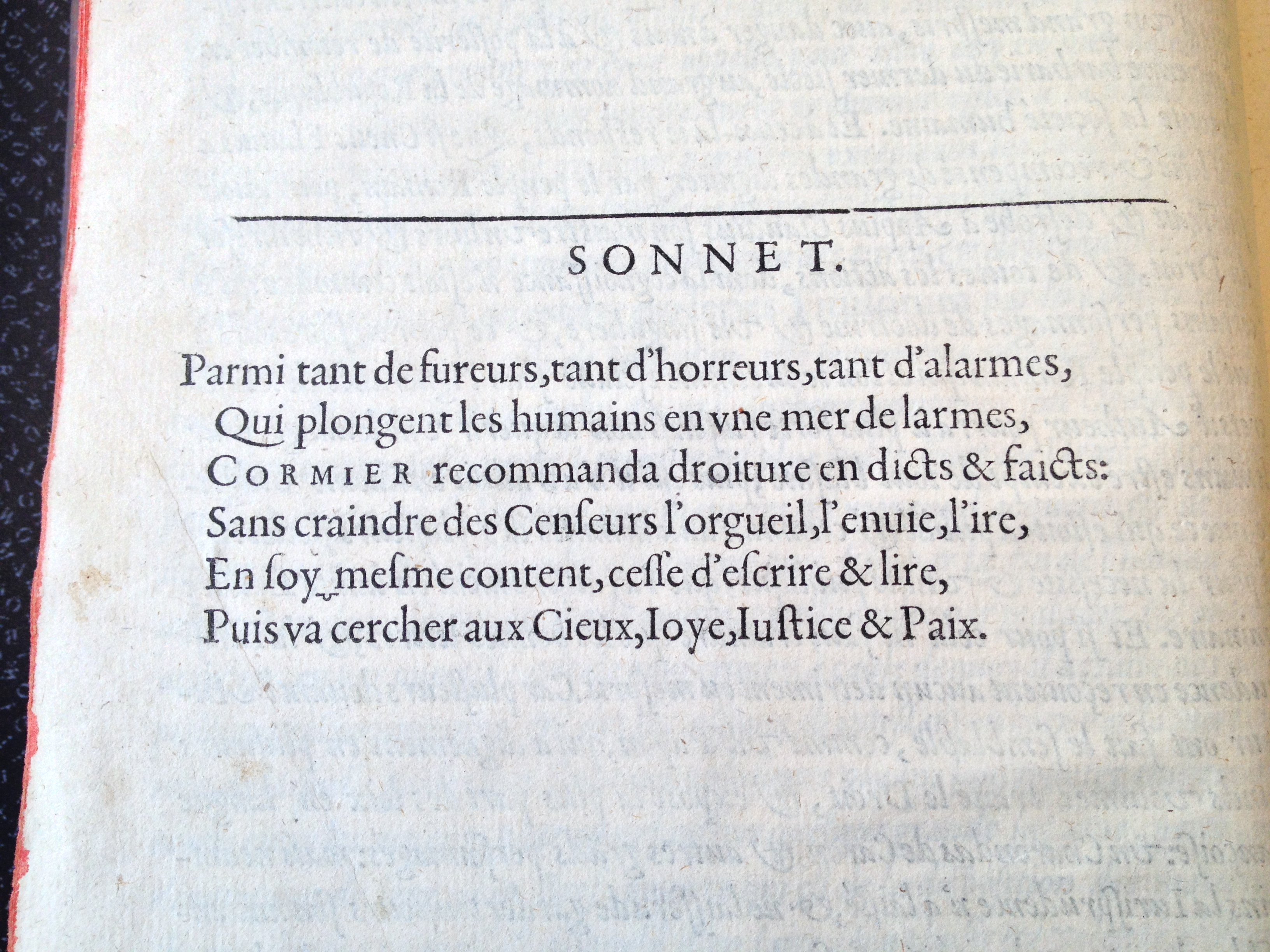 L’exemplaire récemment acquis pour notre bibliothèque est notable par sa rareté (à notre connaissance il y a une seule copie identique de cette édition recensée dans la bibliothèque de l’université de Gand). Cette édition imprimée en 1615 à Rouen par Jean du Bosc est en toute évidence la reproduction non-autorisée de l’édition publiée en 1608 par Jean Arnaud. Jean du Bosc a copié non-seulement le texte mais aussi toute la typographie de l’ouvrage d’Arnaud et même sa marque d’impression (Arion sur un dauphin) en mettant toutefois son propre nom sur la page titre et faisant une omission prudente de la mention de privilège. Malgré des multiples petits travaux de vers, essentiellement marginaux et affectant seulement légèrement le texte, le livre est en bon état de conservation : il a préservé sa reliure de l’époque pleine basane marron avec le dos à cinq nerfs orné aux motifs floraux dorés.
L’exemplaire récemment acquis pour notre bibliothèque est notable par sa rareté (à notre connaissance il y a une seule copie identique de cette édition recensée dans la bibliothèque de l’université de Gand). Cette édition imprimée en 1615 à Rouen par Jean du Bosc est en toute évidence la reproduction non-autorisée de l’édition publiée en 1608 par Jean Arnaud. Jean du Bosc a copié non-seulement le texte mais aussi toute la typographie de l’ouvrage d’Arnaud et même sa marque d’impression (Arion sur un dauphin) en mettant toutefois son propre nom sur la page titre et faisant une omission prudente de la mention de privilège. Malgré des multiples petits travaux de vers, essentiellement marginaux et affectant seulement légèrement le texte, le livre est en bon état de conservation : il a préservé sa reliure de l’époque pleine basane marron avec le dos à cinq nerfs orné aux motifs floraux dorés.
 Pourquoi le Code Henry IV avec des violettes demanderiez-vous ? Parce que ce livre a conservé des traces charmantes d’un de ses lecteurs sombrés dans l’oubli, quatre violettes pressées et séchées entre ses pages, marquant peut-être la section que ce lecteur anonyme a contemplée plus longtemps et plus pensivement que les autres parce que selon Ophélie, « des pensées, [sont] en guise de pensées ».
Pourquoi le Code Henry IV avec des violettes demanderiez-vous ? Parce que ce livre a conservé des traces charmantes d’un de ses lecteurs sombrés dans l’oubli, quatre violettes pressées et séchées entre ses pages, marquant peut-être la section que ce lecteur anonyme a contemplée plus longtemps et plus pensivement que les autres parce que selon Ophélie, « des pensées, [sont] en guise de pensées ».
Journals of the Senate and of the House of Commons added to the Canadian Parliamentary Historical Resources
As we wrote previously, in 2013, the Library of Parliament, in collaboration with Canadiana.org, launched its digital portal. In addition to the free public access to digital versions of the historical debates of the Parliament of Canada in both official languages for both the Senate and the House of Commons from Parliament 1, Session 1, 1867, the portal gives now access to Journals of the Senate and of the House of Commons, the official records of decisions and parliamentary business.
New Exhibit: Annie MacDonald Langstaff
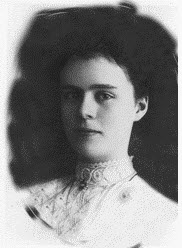 Annie Langstaff, née MacDonald, a legal author, feminist, and aviatrix, was the first woman graduate in law in Québec (first-class honours, 1914), who became known because of her litigation against the Québec Bar, where she was denied access to its qualifying exams. To honour her memory the Law Library opens an exhibition featuring a selection of archival materials, including her original diploma, photographs, and grades’ transcripts.
Annie Langstaff, née MacDonald, a legal author, feminist, and aviatrix, was the first woman graduate in law in Québec (first-class honours, 1914), who became known because of her litigation against the Québec Bar, where she was denied access to its qualifying exams. To honour her memory the Law Library opens an exhibition featuring a selection of archival materials, including her original diploma, photographs, and grades’ transcripts.
She was born in 1887 in Alexandria, Glengarry County, Ontario. She came to Montreal, after receiving her Senior Matriculation from the Prescott (Ontario) High School, and worked as a stenographer for Samuel W. Jacobs, K.C., head of the firm Jacobs, Hall, Couture and Fitch, a well-respected lawyer and advocate of Jewish Rights.
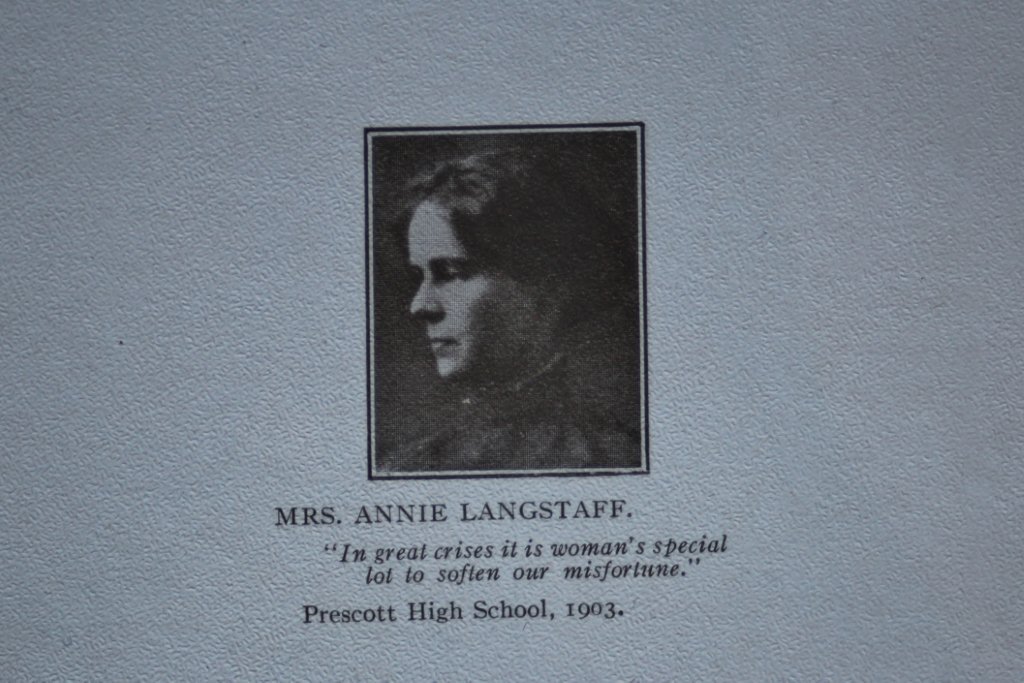
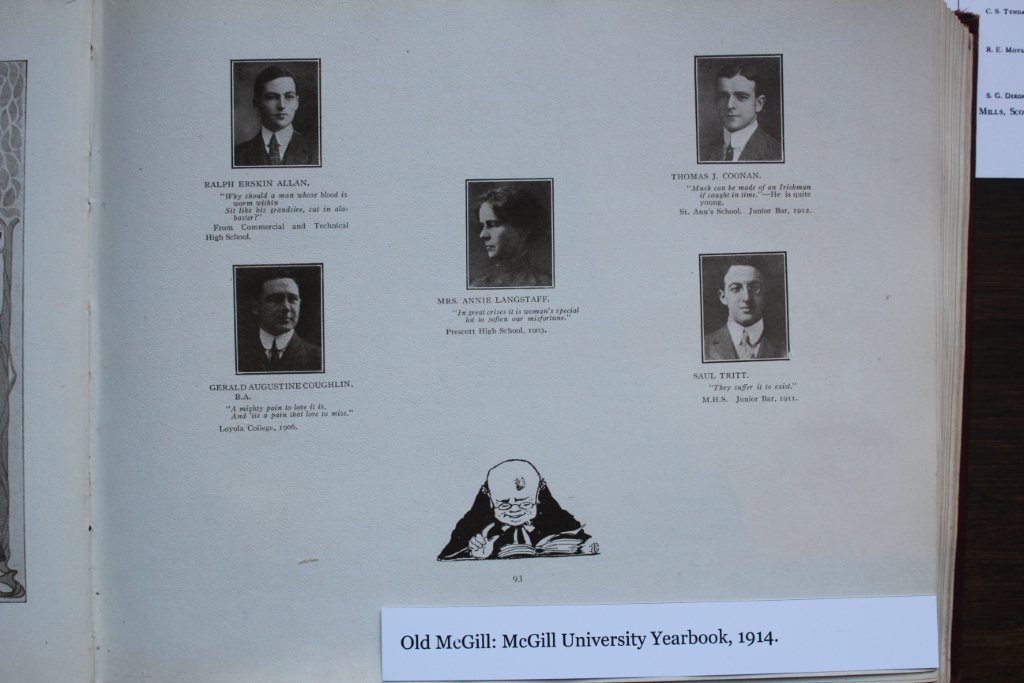 In October 1911, with the encouragement of Mr. Jacobs, she entered the McGill Faculty of Law. She received her B.C.L. in May 1915, graduating with First Class Honours and a prize of $25.00. She ranked fourth in her class of eighteen and led her second year class in Company Law and her third year class in Criminal Law. After Convocation she applied to take the Quebec preliminary Bar examination. This examination was normally taken, by those wishing to study law, three years before presenting themselves for admission to practice and as a preliminary to the university program in law. Mrs. Langstaff, anticipating difficulty in being admitted, chose to complete her law program first, and then to apply for the preliminary examination.
In October 1911, with the encouragement of Mr. Jacobs, she entered the McGill Faculty of Law. She received her B.C.L. in May 1915, graduating with First Class Honours and a prize of $25.00. She ranked fourth in her class of eighteen and led her second year class in Company Law and her third year class in Criminal Law. After Convocation she applied to take the Quebec preliminary Bar examination. This examination was normally taken, by those wishing to study law, three years before presenting themselves for admission to practice and as a preliminary to the university program in law. Mrs. Langstaff, anticipating difficulty in being admitted, chose to complete her law program first, and then to apply for the preliminary examination.
Her application was refused by the Bar and, with Mr. Jacobs as her counsellor, she petitioned the Superior Court for a writ of mandamus summoning the Quebec Bar to show cause why it should not be ordered to grant the application since Mrs. Langstaff met all the statutory qualifications for sitting the examination. At the hearing, Mrs. Langstaff assisted in the presentation of her case. Her petition was dismissed with costs by Mr. Justice Saint-Pierre. (Dame Langstaff v. The Bar of the Province of Quebec (1915) 47 C.S. 131.).
Mr. Justice Saint-Pierre noted that Mrs. Langstaff was “a young woman of good morals and possessed of considerable ability” (p. 145), but his Lordship held that “to admit a woman and more particularly a married woman as a barrister as a person who pleads cases at the bar before judges or juries in open court and in the presence of the public, would be nothing short of a direct infringement upon public order and a manifest violation the law of good morals and public decency” (p. 39). The opinion of Mr. Justice Saint-Pierre caused a public outcry. It was the subject of a number of newspaper headlines and articles. Mrs. Langstaff’s supporters, led by Professor Carrie Derick of McGill, and the members of the Local Council of Women, organized a mass protest against his remarks and decision.
Mrs. Langstaff, still represented by Mr. Jacobs, appealed to the Court of King’s Bench. A hearing was held on 16 September 1915 and arguments were closely covered in the local press. On 2nd November, the Court in a four to one decision (Mr. Justice Lavergne dissenting), affirmed Mr. Justice Saint-Pierre’s decision (Dame Langstaff (Annie Macdonald) v. The Bar of the Province of Quebec (1916) 25 B.R. 11.). Although that was the end of her personal legal battle, she continued to fight by supporting various bills introduced to change Quebec law so as to allow women to practise law.  But she was never allowed to write the examination and by the time the law was finally changed, in 1942, a Bachelor of Arts degree had become a prerequisite. Mrs. Langstaff was not prepared at the time in her life to return to formal university studies. Mrs. Langstaff continued her work for the law firm (which she described as “a little secretarial work, a little bookkeeping, and a little law”, McGill Reporter, 11 February 1976).
But she was never allowed to write the examination and by the time the law was finally changed, in 1942, a Bachelor of Arts degree had become a prerequisite. Mrs. Langstaff was not prepared at the time in her life to return to formal university studies. Mrs. Langstaff continued her work for the law firm (which she described as “a little secretarial work, a little bookkeeping, and a little law”, McGill Reporter, 11 February 1976).
She was the first woman stenographer employed in a Montreal Criminal Court (Court of Special Sessions, June 1914). She became a successful aviatrix and, on the occasion of Marshall Foch’s visit to Montreal, circled above the city for an hour to the delight of thousands of spectators. She was the author of several articles on family law published in popular women’s journals and of an English-French French-English Quebec Legal Dictionary (1937). She retired from the firm, now known as Phillips and Vineberg, in 1965 at the age of 78. She died on 29 June 1975 at the age of 88.
On September 7, 2006 The Montréal Bar bestowed on Mrs. Annie MacDonald Langstaff a posthumous honour by giving her the Medaille du Barreau de Montréal in recognition of her accomplishments.
Information and text for this blog post were derived from the memorial plaque exhibited in the Annie Langstaff room at the Faculty of Law, McGill University.
Historical Supreme Court of Canada Judgments Now Available Online
The Supreme Court of Canada (SCC) has made all decisions published in the Supreme Court Reports dating back to 1876 available on the SCC Judgments website. All of these newly-added SCC decisions can also be found in the CanLII database. Please visit the official SCC Judgments website to access the judgments.

